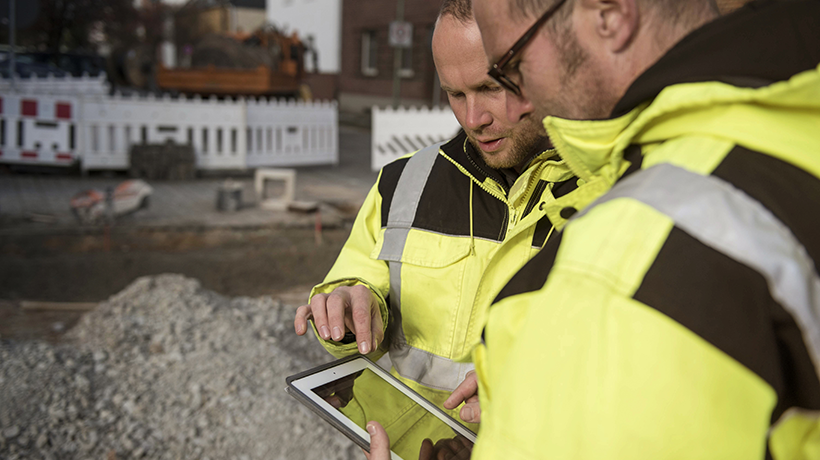We have become a society of impatience. It’s the stark reality of our culture where we have unlimited information at our fingertips. We demand what we want, when we want it and how we wish to consume it. If we download a mobile app to our smart phone and if it takes more than a few minutes to figure out, the modern reaction is to delete the app and search for the next best thing. This is a fast-paced world where consumers are no longer satisfied with the status quo and are constantly asking for more value. “What else can you do for me?”
None of these statements are earth-shattering. This is the way the world works. But in order to accommodate this modus operandi of consumers, technology vendors need to be responsive. They have to start thinking like consumers and not just resting on their laurels of aging technology that once was very robust and powerful, but employ strategic thinkers who are planning for the next, next big thing.
So how does this apply to electric utilities? Once upon a time, distribution utilities were viewed as slow moving, resistant to change and only willing to adopt proven technology. Those days are now over. I personally have witnessed change in the last five years as to where the utility is now pushing the envelope on thirst for new technology from the vendor space. All the while, they are operating in an environment where rates are flat, and pressure to deliver higher levels of service with less resources is the name of the game. Utilities are not only forced to embrace technology, but to do it at a faster rate of change. So even though this is the new normal, that doesn’t mean that a utility can automate just for sake of automation. The business case still determines investment based on available technology at point of sale. But beyond that, they are looking for a committed road maps that will provide them with more value over the lifetime ownership of the solution. They are considering the next, next when it comes to evaluating and purchasing technology.
This state of affairs got me to thinking specifically about mobile workforce management. For many years software vendors have been providing solutions to automate the field worker. A quick search on the Internet will produce volumes of results for mobile workforce management. In more recent years, the development of commercial apps for Apple, Android and Windows have become commonplace. If the field worker can’t access their data and perform their workflows using a tablet or smart phone, the adoption of the solution will be a non-starter; this is just a core expectation of a mobile solution.
So what are some of the things that vendors are working on as the next, next big thing for mobile workforce management? One example that comes to mind is the use of voice activated commands within apps or on smart devices. Commercially, Apple released Siri as an integral part of iOS 5 as a feature on the iPhone 4S in October of 2011. Android and Windows followed that path with Google Now and Cortana respectively. These technologies have gotten better and better and now you can virtually ask or tell your smart device to do just about anything. Beyond the native controls for voice interaction, there are also apps that enable voice control over others apps. The most recent entry into the market is the Amazon Echo, which is a standalone device that takes action based on voice commands.
So how can this technology enhance the utility mobile field worker? Imagine a trouble shooter being able to provide dictation when performing an inspection or assessment of damage after a major storm. Not simply noting results, but being prompted by the application and allowing the user to respond with voice notes. An interaction might look something like this.
Smart App: Based on your location, you are at pole location 1916 24W6. What would you like to do?
Field Worker: Perform damage assessment.
Smart App: Here is a list of components at this location. Are any of them damaged?
Field Worker:The pole is broken and needs to be replaced.
Smart App:Is there any more damage?
Field Worker:No.
Smart App:Would you like to take a picture of the damage?
The workflow would continue on, back and forth, but this is enough to paint the picture of the interaction.
I believe that the true value in this interaction is not just an app responding voice commands but being prompted to take action. It is not quite artificial intelligence, but it is moving in that direction. Algorithms that are intuitive enough to predict what you will need and when you will need it. Apple is already using location-based services to provide you with driving times to your common locations, such as work, or home, at certain times of the day. Soon mobile workforce apps will be smart enough to recognize your destination and initiate the workflow by prompting you to take action once you arrive. In the case of an inspection workflow, this would result in the app letting you know verbally that you have arrived at a pole or transformer that needs inspection and stepping you through the inspection workflow.
As technology continues to improve, the efficiency of the mobile utility worker will also increase. This has quantifiable benefit as more work can be performed in the same amount of time. Driving routes are already being optimized by turn-by-turn directions. It is time for the evolution of the mobile field service tools to evolve as well, so utilities can gain more value from their investment.
If you don’t think that utilities are already thinking beyond current vendor solutions toward the next-next, then you have already missed the boat.















